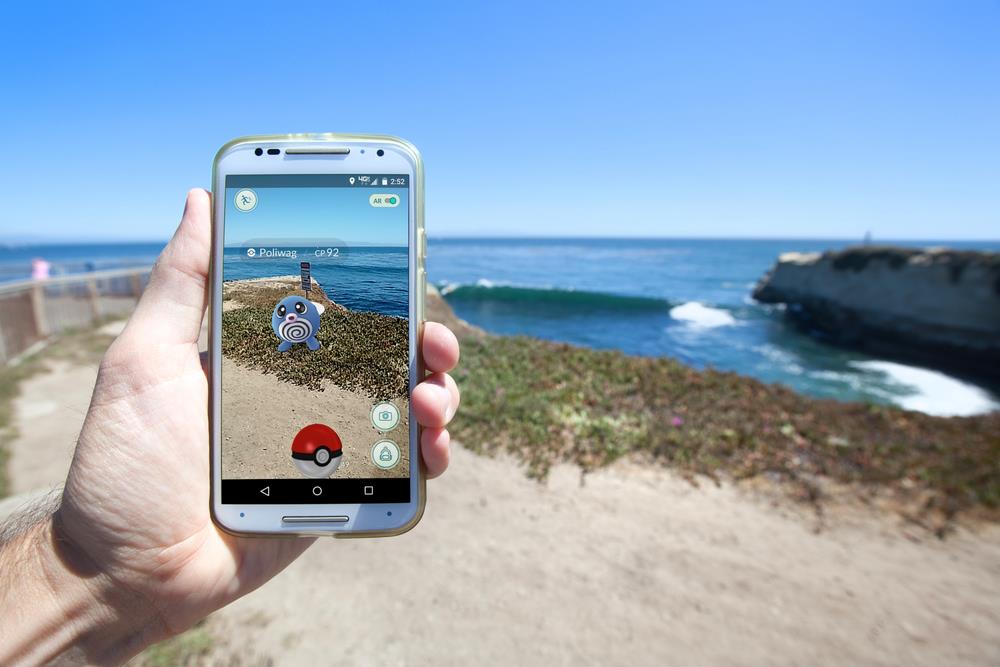How PokemonGO is driving advertising traffic

The basics of its success
PokémonGo’s concept is fairly simple and extraordinarily similar to geocaching, the satellite-mapped treasure hunting activity that started in the early 2000s. Basically, you download PokémonGo as an app to your smartphone, and the app randomly generates Pokémon (animated creatures famous from the television show) onto a satellite map of your surrounding area. These Pokémon can then be caught by swiping your finger across the screen to “catch” them. While producers at Niantic are reticent to give any gameplay directions on how to interact with the game, it seems that the primary objective is to “catch them all”; and the higher level your Pokémon, the better.
Niantic, started as an internal Google project, has succeeded in large part because of its connections with parent company Google. Proprietary access to GoogleMaps technology allows the game to seamlessly show up-to-date local mapping which helps its augmented reality experience feel clean and immersive. The game has done phenomenally well, quickly breaking records both with iOS and Droid devices for most downloads. The game currently has 100 million users across the globe since its release at the beginning of July.
The in-app purchase with a surprising effect
PokemonGo currently brings in US$10m in daily revenue, mostly from in-game purchases. One of the most lucrative purchases is what is called a “lure.” After buying a lure, the owner can place it on a Pokéstop (a geographic location marked as a hub in the game), increasing the spawn rates of Pokémon in the area. While there have been issues reported with lures being placed as bait for armed robberies, lures are meant as a benefit for players, and now, local economies.
Pokéstops are placed at random by the game at notable geographic locations; monuments, parks, public buildings and in some cases memorials. This encourages people playing the game to get out of their homes and go for a walk, some people venturing so far that they have to call for an Uber to get home. But in urban areas, Pokéstops mean more foot traffic and more foot traffic means more business.

A new kind of advertising
With so many people who might otherwise not be out and about, local urban businesses have seen a huge boost in incidental sales, and companies that invest the $10 to put a lure on their nearest Pokéstop for 24-hours can sometimes see that increase in business multiplied hundredfold. As an example, the Denver Zoo recently invested $380 in lures over a weekend period and saw a $58,000 jump in sales from PokemonGo users alone.
Compare that ROI to the abstract benefits garnered by online advertising, and it’s easy to see how PokémonGo gives online advertising a run for its money. Additionally, the small businesses that benefit most from the game’s physical presence near storefronts and restaurants often can’t afford to pay for the online advertising in the first place.
So what could this mean for the future of geographically-influenced advertising? Your computer or cellphone already uses location services to suggest places and products close to you, on a larger city-wide scale. With access to the kind of precise mapping Niantic uses, it is possible that in the near future we might see advertisements popping up as we pass storefronts that align to our style, budget and needs.

Foreseeing the future
When it comes to the technology PokémonGo brings to the table, it’s hard not be excited. The game is bringing augmented reality into the public eye and pushing the limits between the real world and the digital world. Beyond that, it’s also changing the way people feel about precise location technology. As these capabilities become more normalised to the public, they also become more accessible to the marketer.
Is it likely that we will see this technology spreading soon? No, not very. Niantic’s special relationship with Google is a large part of what makes the game so successful—and it’s unlikely for others to be able to develop the same sophistication without the existing framework Google has in place. Then again, with every eye turned to the screen, it’s possible that on a longer timeline PokémonGo reflects a new comfort with location technology that will shape advertising in the years to come.
More like this








